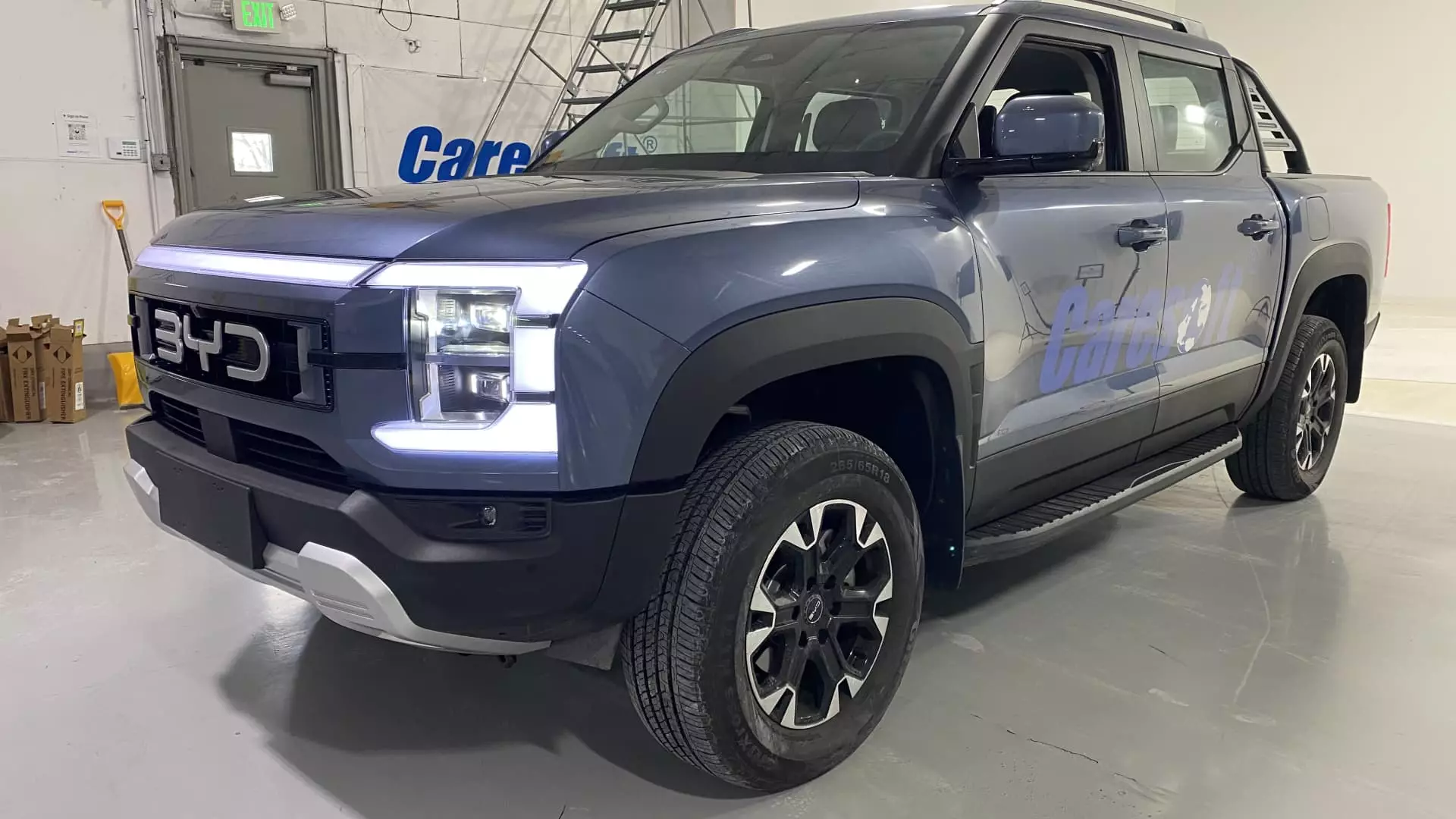The automotive landscape is rapidly evolving, especially with the entry of Chinese manufacturers like BYD Auto into markets traditionally dominated by American giants. As the international competition heats up, BYD’s latest offering, the Shark pickup, has started to garner attention for its market potential and design elements that resonate with American consumers. This article delves into the implications of the Shark’s introduction and what it means for the future of the automotive industry.
Upon first glance, the BYD Shark could easily be mistaken for an American-made vehicle. Its design mirrors popular models like the Ford Explorer and F-150, invoking a sense of familiarity among consumers. This resemblance is no mere coincidence; it reflects a strategic approach by BYD to penetrate markets where American brands reign supreme. The Shark’s design seeks to appeal to the aesthetic preferences of U.S. buyers while challenging the entrenched positions of long-standing domestic models.
While some might argue that the influences are too overt, it is crucial to understand the market strategy behind these parallels. As American automakers have cultivated a unique identity over decades, vehicles like the Shark that evoke similar styling cues can attract attention from consumers hesitant to embrace more radical or foreign designs. This calculated move suggests that BYD is not merely entering the market to compete; it aims to redefine consumer comfort levels and perceptions of foreign-made vehicles.
Although BYD has not announced any intentions to launch the Shark in the U.S., its foray into other markets such as Australia, Brazil, and Mexico presents a pivotal moment for its global strategy. These regions serve as vital testing grounds, where the stakes are high not just financially but also strategically, as traditional market players like General Motors and Toyota have established strong roots. The Shark’s successful rollout could ripple through these markets and set the stage for future endeavors in North America.
In fiscal terms, pickup trucks represent a cornerstone of American automotive sales, significantly contributing to the bottom lines of leading manufacturers. Companies such as Ford and Toyota rely heavily on the profitability of their truck lineups, making the rise of a competitive alternative like the Shark particularly worrisome. BYD’s ability to keep prices low through efficient production and technology could compel established brands to reconsider their pricing strategies, creating a more competitive marketplace.
BYD has positioned itself at the forefront of electrification, and the Shark’s hybrid powertrain exemplifies this commitment. Combining a 1.5-liter internal combustion engine with electric components allows for versatile driving options while maintaining a competitive price point. Such innovation not only appeals to environmentally conscious buyers but also establishes BYD as a credible contender in a rapidly changing automotive environment.
Moreover, the Shark is engineered to deliver impressive performance metrics, touting a range exceeding 500 miles when utilizing both its battery and combustion engine. While its initial price in Mexico is competitive compared to similar offerings from Ford and Toyota, analysts identify a substantial opportunity for growth in emerging markets. With the automotive landscape shifting towards electrification and hybrid models, the Shark’s introduction can serve as a harbinger of change for traditional automotive expectations.
Despite its strengths, the Shark is not without its criticisms. Early reports emphasize areas where its build quality does not match the refinement of established brands. This discrepancy raises questions about long-term customer satisfaction and brand loyalty. Areas of concern highlighted by industry experts, such as less-than-ideal suspension tuning and interior layout quirks, indicate that while BYD is making notable strides, there are still elements requiring refinement.
Industry analysts caution that entering competitive markets dominated by legacy brands necessitates exceptional build quality and attention to customer feedback. As such, while the Shark might make waves initially, BYD will need to evolve continually in response to consumer expectations and industry standards to solidify its standing in global markets.
The emergence of BYD’s Shark is not just a single event but a significant indicator of how the automotive industry may evolve in the coming years. As barriers to entry diminish and global competition intensifies, American automakers must remain agile, innovating quickly in response to the challenges posed by aggressive foreign competitors. BYD’s foray into the pickup truck market underscores a broader trend of globalization and innovation, where traditional assumptions about market dominance are increasingly being challenged.
The BYD Shark’s introduction could pave the way for a new era in automotive manufacturing and sales, one characterized by innovation, adaptability, and shifting consumer preferences. As legacy automotive giants assess their strategies in light of emerging competitors, it remains to be seen how they will respond to the changing tide. The automotive world stands at an intriguing crossroads, promising a landscape full of unprecedented opportunities and formidable challenges.

